Any performance art fans out there?
I think we’ve all seen a mime or two along the way. Perhaps Yoko Ono comes to mind.
Some performance art seems close to exhibitionism. It is, however, a very diverse field.


My own favorite performance artist is Claire Porter.
Categories overlap in performance art. Claire is also a dancer, choreographer, and comedian. You can watch some video clips on her website.
I got to see Claire perform at Keene State College some years ago. We chatted after the show, and we’ve been friends ever since.


Recently she was asked to contribute a chapter to a book on performance art. She asked me to illustrate it.
She notes that while there are no hard and fast rules for crafting performance art, it pays to think about certain things.
She mentions 5 steps, and it’s interesting: they apply to illustration and marketing as well as performance art. Not surprising, really, since they’re all art forms.

1. Zero in
Simply put: decide what you want to explore. Consider all the possibilities, than narrow it down.
If you’re an illustrator: what point are you trying to make? Where’s your main focus?
If you’re a marketer: what’s the “why?” behind your content? What are you trying to achieve?

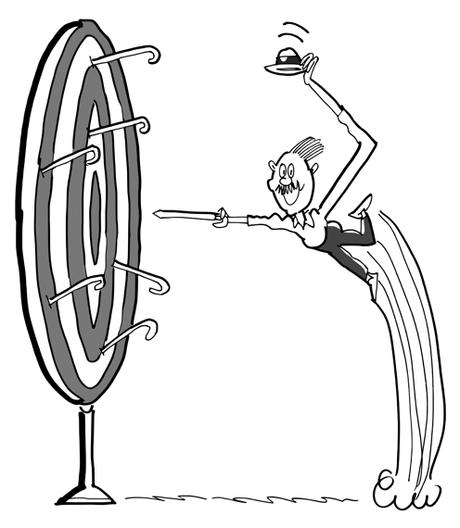

Maybe your performance piece will have dialogue. Maybe signs, or writing of some kind. Maybe no words at all. Doesn’t matter.
Jot down possible titles, keywords, ideas. See what resonates. A phrase may suggest certain movements, take you in an unexpected direction. Wordplay sparks ideas.

If you’re an illustrator, jot down keywords and phrases used by the client, see what they suggest, what images come to mind.

If you’re a marketer, you’re trying to make an emotional connection. Write down words that describe the feelings you’re trying to inspire. See where they take you.

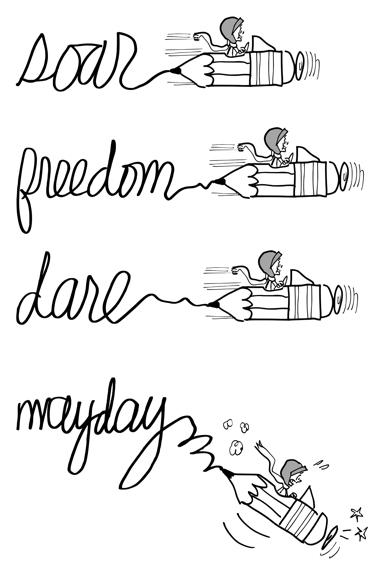

You’re trying to get a feel for what works. String different bits and pieces together. Go a little crazy. Experiment. Speed things up, slow things down. Be abrupt, draw things out. Try different costumes, props. Change the rhythm, the pacing, your physical space. Incorporate any happy accidents.
The most important thing: don’t judge or edit yourself. There’s no right or wrong at this point, so let ‘er rip!

Every illustrator recognizes this stage: here’s where you make all your rough thumbnail sketches. Anything goes, nothing’s too crazy or absurd. Make it as messy as you want. You never know what might pop out. A lot of it will get thrown out, but who cares? You’re trying to generate ideas.

If you’re a marketer, here’s where you try different approaches, take some risks, think funny, explore ideas that are “out there.” Why not? You’re not judging or editing yourself at this point, because that would restrict your creativity.

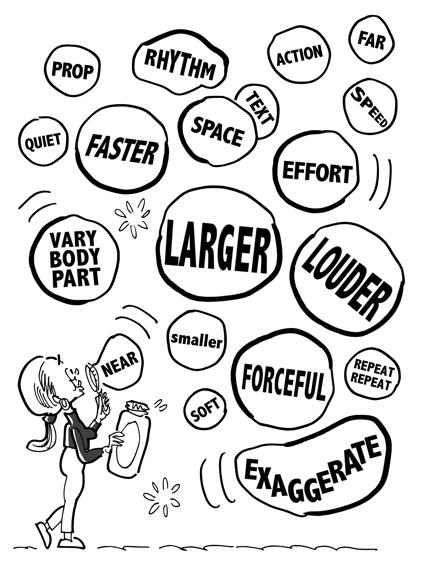

Start putting things together. You’re not at the truly ruthless editing stage yet. Stay loose, remain open to inspiration. Ask yourself what seems to be working, and what isn’t. If it feels right, keep it. If not, put it in the “reconsider” pile. Refine your ideas. Start pulling
the best bits together.

If you’re an illustrator, you’ve made a number of sketches. Ask yourself which ones you like best, and why. Are there elements in two or more sketches that you could somehow combine?
If you’re a marketer, you’ve tested different scenarios, tried variations. What engaged, what fell flat? What needs tweaking? What’s generating the most enthusiasm? Time to narrow the field and start rounding up your best ideas.

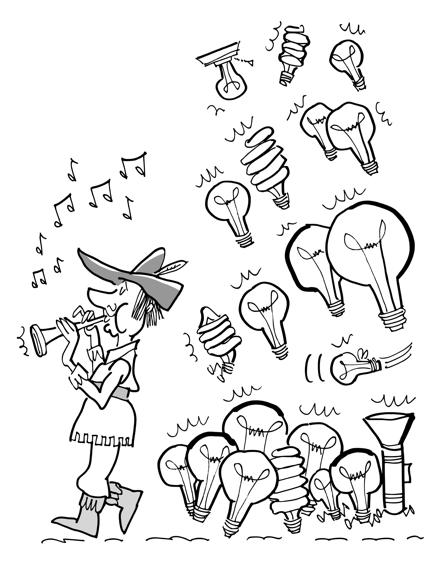

Put a performance together. Make some decisions re text/dialogue, movements, the physical space. Work out the sequence. Ask yourself what you find most intriguing, what holds your interest.
Perform the piece before a test audience. Collect feedback. Are they “getting it”? If not, what are they getting? What’s not needed? What needs to be reworked? Were there any surprises? Can you use them to advantage?

If you’re an illustrator, it’s time to finalize your rough sketches, and send them to the client for feedback. Revise as necessary, and stay alert for last minute inspiration.

If you’re a marketer, it’s time to present your concept(s) to the client, and get feedback.
If you do your own marketing, ask trusted colleagues for feedback (if you belong to a local business group, for example). Be open to feedback and criticism, and resist any urge to defend your concept as complete and correct.

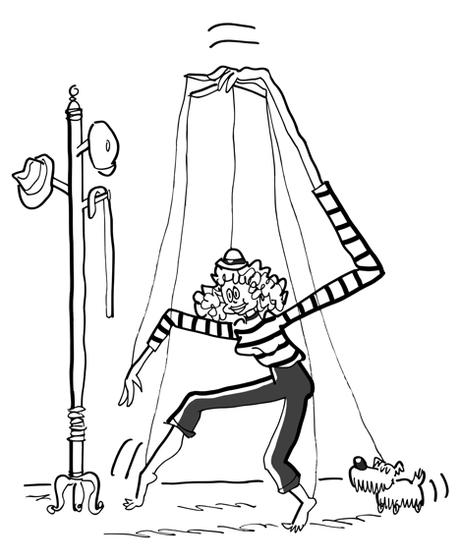


Do let your material have a life of its own. Follow it. This can free you from having to tell an audience what to think or believe. Let them discover.
There’s a lot of wisdom there whether you’re a performance artist, an illustrator, a marketer, or anyone who’s trying to communicate.
Resist the urge to be preachy or dictate terms. Telling people what to think breeds resentment (usually, invisible resentment).
Be creative. Craft your message in a way that allows people to discover it for themselves. There’s no better route to credibility.

* * * * * * * * * * * * * * * * *

Communication touches every aspect of our lives. Even if we choose not to communicate. It’s the key to success, both in business and in life. Any thoughts about that? Please leave a comment.

